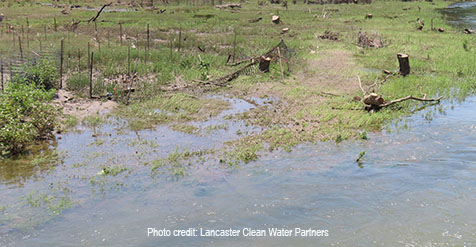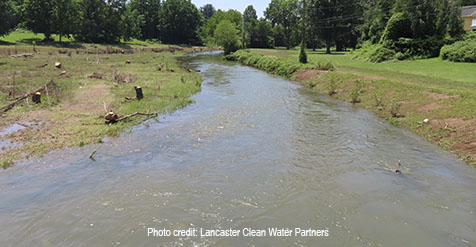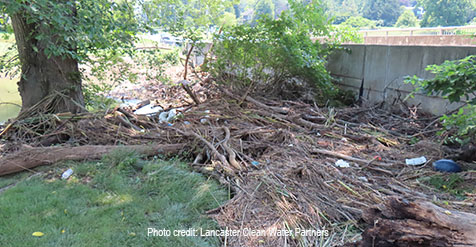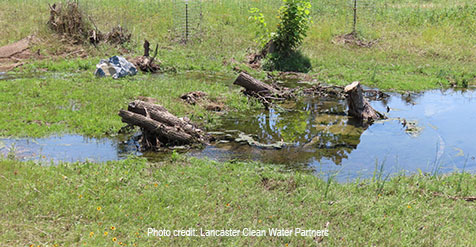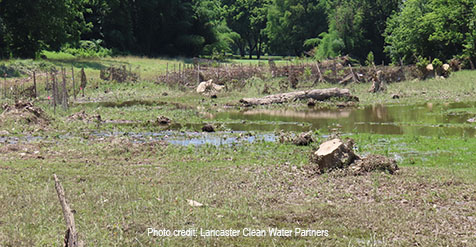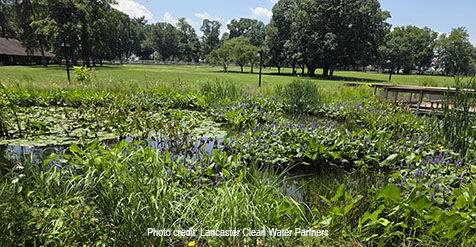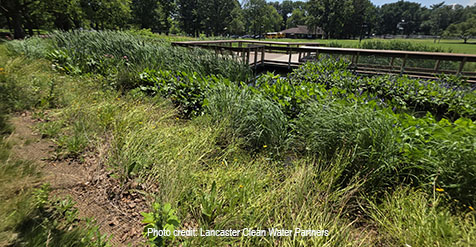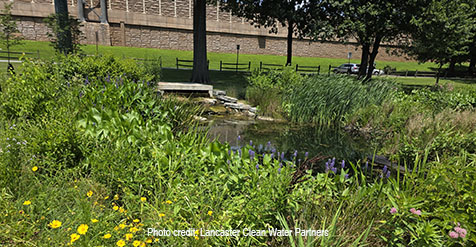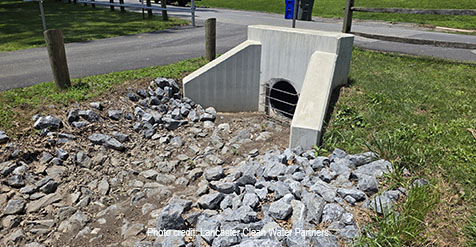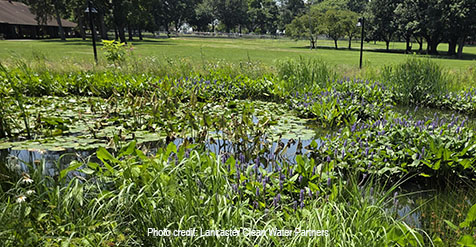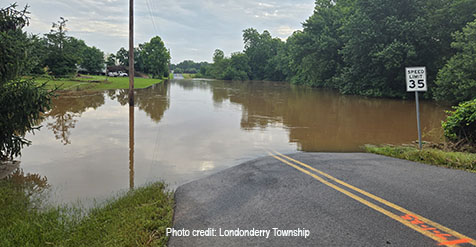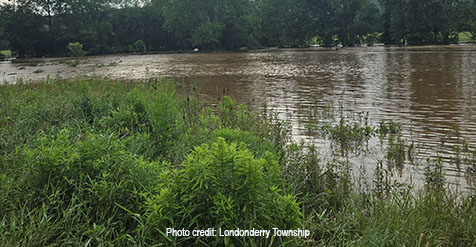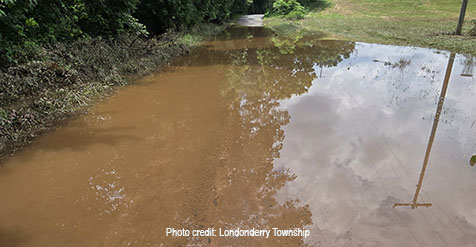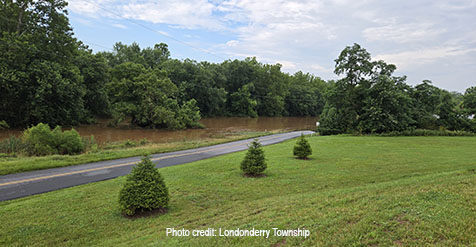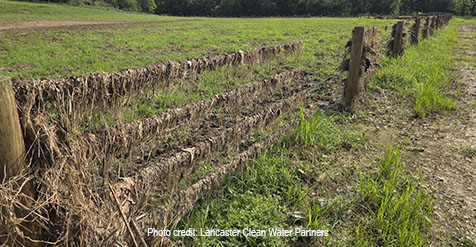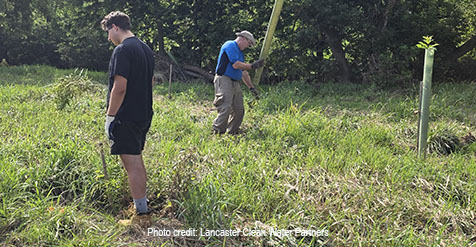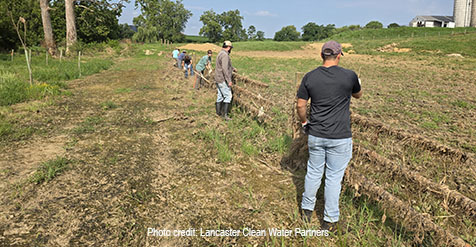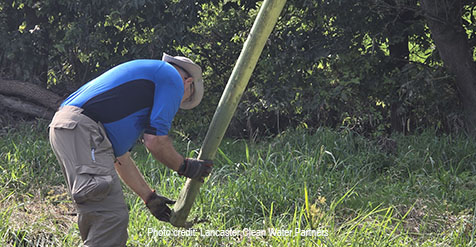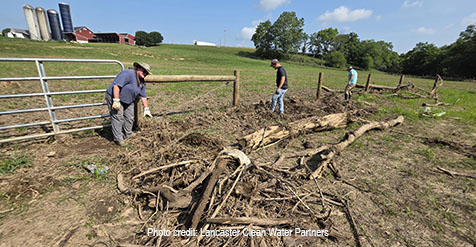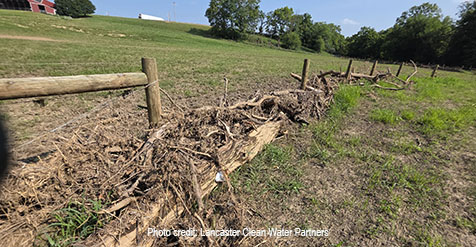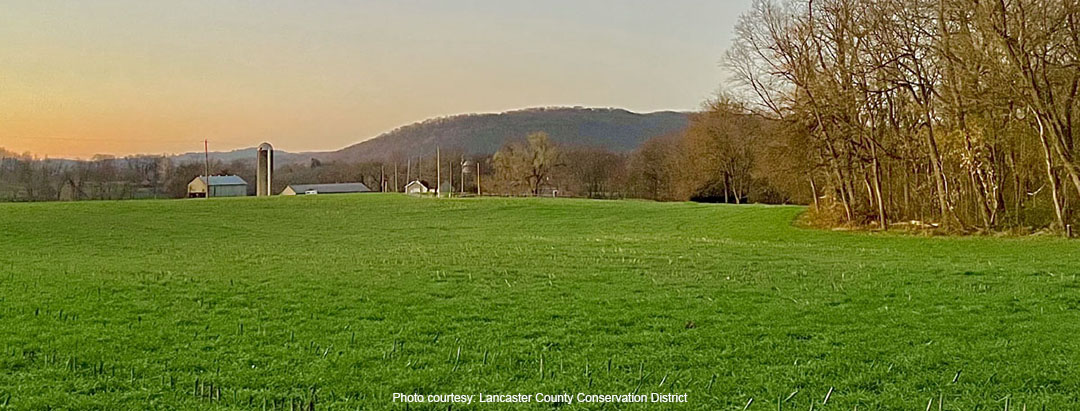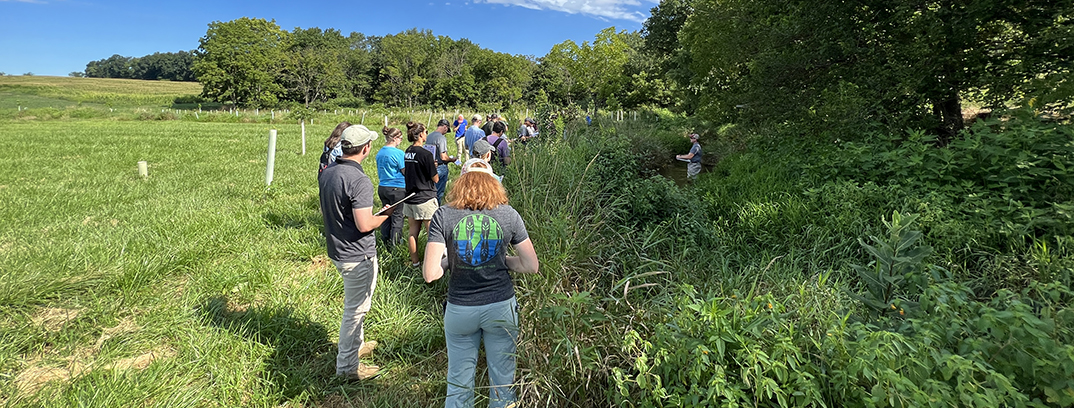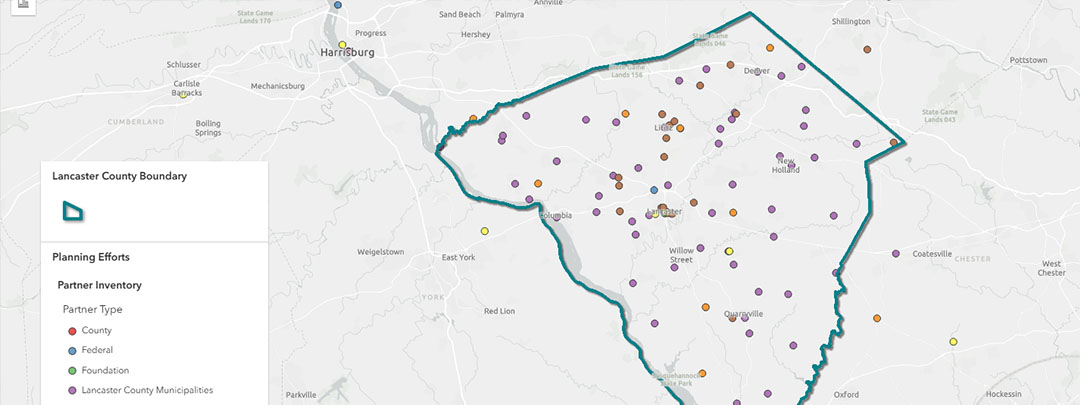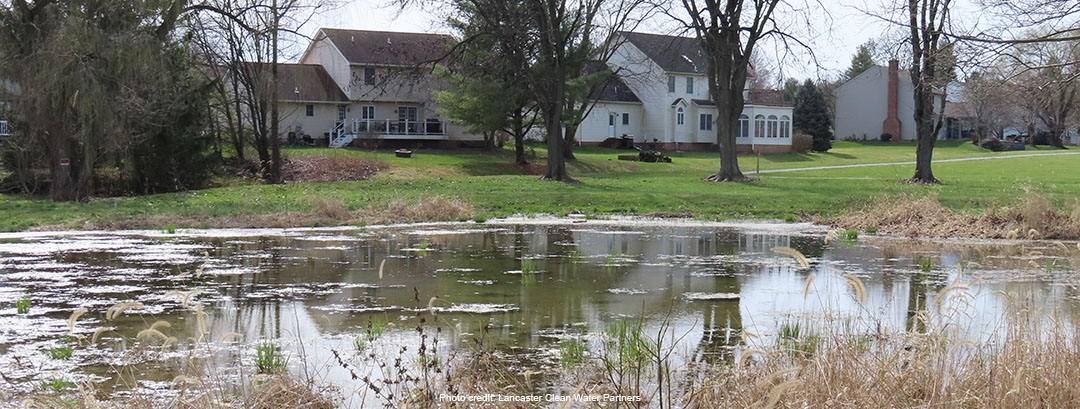Weathering the Storms
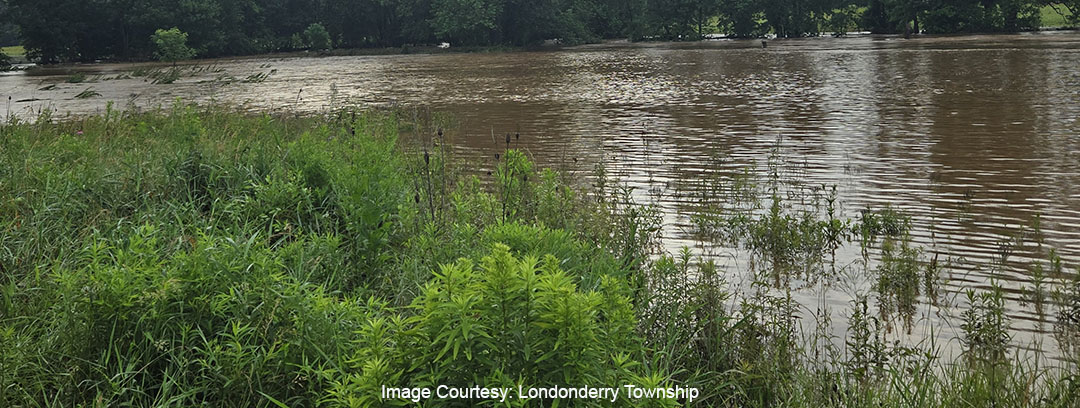
July brought record-breaking rainfall to Lancaster County, putting our local stormwater solutions to the test. July 1 brought near ly 7 inches of rain to Manheim. Nearly 5 inches was reported at the Lancaster Airport and 3 inches in West Lampeter Township. Another storm, on July 14, dumped 7.5 inches of rain on Mount Joy Township, washing away hundreds of newly-planted trees and native shrubs.
“We hope this incident catalyzes others to address water quality, ecosystem health, and sustainable stormwater management throughout Lancaster County,” said Shane Zimmerman, CEO of the Steinman Foundation, one of the lead project sponsors.
Diffierent project site, under different phases of completion, fared against the flooding and heavy rain to varying effect.
Blue-Green Connector
For project sites like the Blue-Green Connector along the Little Conestoga Creek, which was planted with trees, shrubs and grasses in May, floodwaters brought debris, rushing water and mud. It was a challenge for the newly-installed vegetation, but planners of the project, The Little Conestoga Creek Foundation and the Steinman Foundation, were pleased with the project’s resiliency and released a press release on July 8. While it notes that the project was not designed for flood mitigation, the press release notes how “land use that minimizes hard surfaces, green infrastructure that helps water soak in place instead of runoff, and native plants and trees with deep root systems are all recommended solutions to this problem.”
(see slideshow, right)
Long's Park Wetlands Project
The Long’s Park wetlands has five basins: the forebay, an iron-enhanced sand filter, an upper marsh, a lower marsh, and Long’s Pond itself. Brackbill said the wetlands were designed to prevent any of the first four basins from being overwhelmed during a 100-year storm. There are spillways between the four basins, and runoff flows over the spillways during a high water event.
“During the storms earlier this month, the system worked exactly as it was designed. It handled the rainfall and the runoff from Route 30 and avoided the local flooding the area would have seen in year past,” said Water Resources Engineer, Angie Brackbill.
(see slideshow, right)
Conewago Creek Restoration Project
Work on Phase 1 of the Conewago Creek Restoration Project, which began in 2022, restored sections of the creek back to its historic floodplain and removing 125,000 cubic yards of legacy sediment, which allows for that same space to accommodate flood waters. Furthermore, reconnecting the hydraulic system allows for better infiltration of groundwater.
Prior to the restoration, the area would see, on average 4 – 6 fliooding events per year. While they are far less-common now, the July storms dumped enough rain to flood several local roads, but further phases of restoration are in progress to better protect from flooding.
“That was a crazy event, ” said Londonderry Township MS4 Environmental Specialist, Monique Dykman, “I am glad we are doing phase 4 to further mitigate flooding. But more work needs to be done!”
(see slideshow, right)
Farm in Mount Joy Township
This farm in Mount Joy Township was hit hard, first by the July 1 storm, and then by an additional 9 inches of rain on July 14. Part of the project was a buffer, planted in the fall of 2024 by Penn State and Alliance for the Chesapeake Bay with a NFWF grant.
An emergency repair session was held on July 23, where volunteers remove debris from the fence line and straightened, re-staked and re-tubed the trees that were left.
(see slideshow, right)
These are a few local examples. We will be adding more as they become available. If you have an example of a projected that weathered the recent storms, please submit information and pictures via email at info@LancasterCleanWaterWaters.com

